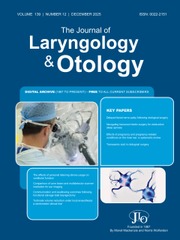No CrossRef data available.
Article contents
The contrast swallow study: a sub-optimal investigation for identifying pharyngocutaneous fistula following laryngectomy
Published online by Cambridge University Press: 27 March 2025
Abstract
This article aimed to evaluate the diagnostic accuracy of the contrast swallow study and its role in informing management decisions in patients following laryngectomy.
A five-year retrospective case note review on all patients who underwent laryngectomy between April 2018 and July 2023 at a tertiary head and neck cancer centre.
A total of 82 patients met inclusion criteria; 22 had reported radiological evidence of a pharyngocutaneous fistula on contrast swallow study; of these only 1 developed a clinical pharyngocutaneous fistula. Of the 60 with no radiological evidence of a pharyngocutaneous fistula, 3 developed clinical pharyngocutaneous fistulas. This represents a positive predictive value of 5 per cent and a negative predictive value of 95 per cent.
In this cohort, the contrast swallow study was a sub-optimal investigation. The high NPV may support decision-making when there is little clinical suspicion, however the low PPV represents significant over-reporting and may cloud the clinical decision-making process.
Information
- Type
- Main Article
- Information
- Copyright
- © The Author(s), 2025. Published by Cambridge University Press on behalf of J.L.O. (1984) LIMITED.
Footnotes
Henry Lonsdale takes responsibility for the integrity of the content of the paper

